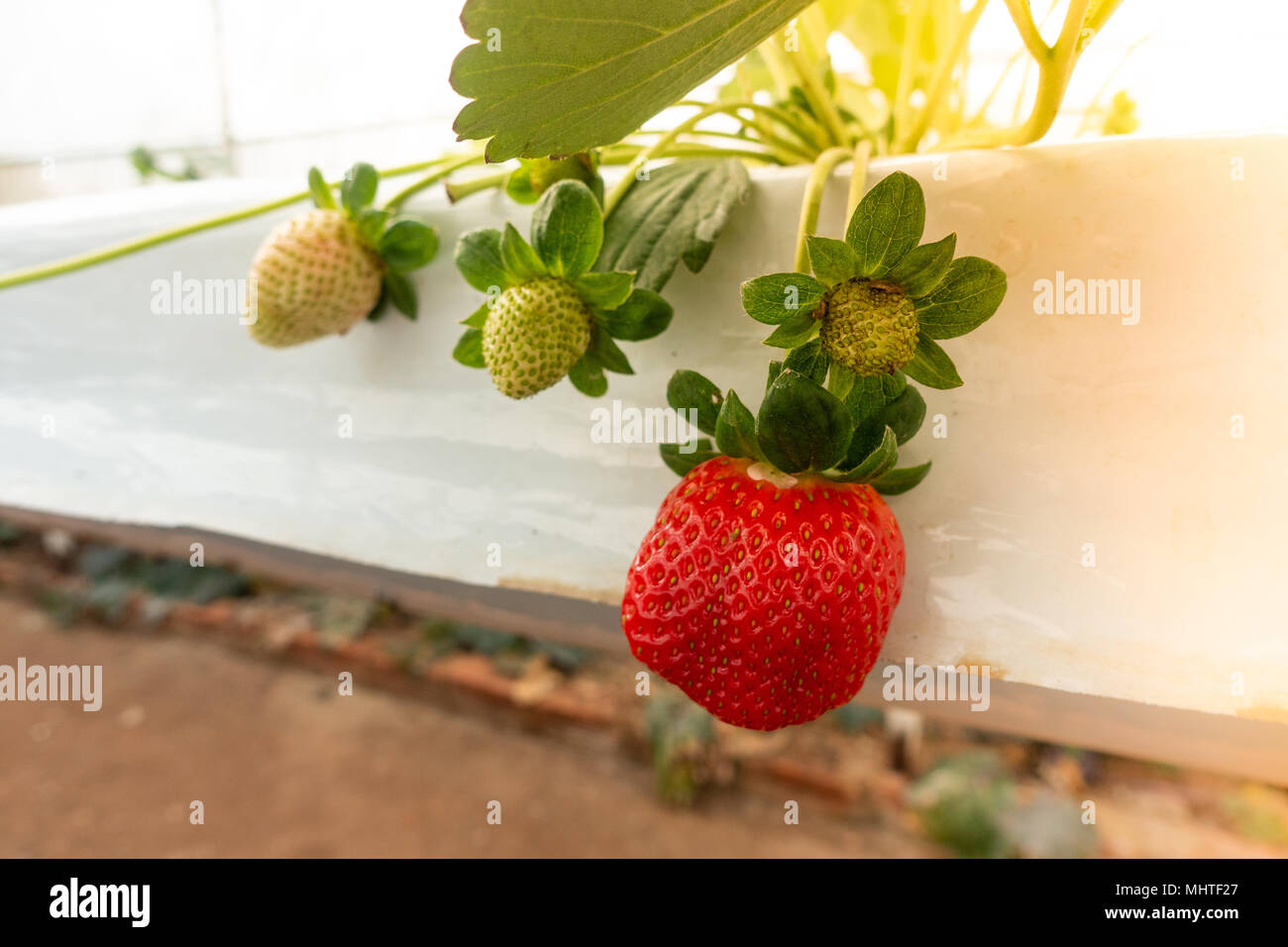

In fact, it can be a great way to propagate rarer varieties or to experiment with cross-breeding of your own. While you’ll have quicker and more predictable results from a starter bulb, there’s nothing to say you can’t grow from seeds. Once the plant is in place, you can go ahead and put it into your system. For rockwool or sponge, you’ll need to hollow out a space for the bulb. This is easiest to do in a loose medium like a perlite-based soil-less blend.

Plant in your Hydroponic SystemĬlear a space in the medium for your bulb. If your bulbs come with soil around the roots, it’s a good idea at this point to wash the soil from the roots thoroughly. I personally like a mix of perlite, coconut coir, and vermiculite for my strawberries, but they do well with rockwool too. A half-strength nutrient solution is best for this, as the plant will need nutrition immediately to grow new roots. Soak your medium overnight so it is ready to receive the bulb. The Seascape variety is also a good choice for home hydroponics. They’re a day-neutral cultivar with a good track record of producing sweet, delectable fruit in hydroponics. The fun part of any planting is selecting your variety! Strawberries do well in Kratky setups, nutrient film systems, and salad tables, but the most reliable results generally from drip and drain systems. They are effectively seedlings, after all, and need no finishing off before you can put them into your rig.Ĭhoose a system that allows a lot of air to reach the roots. When growing a starter bulb, you’ll get the best results when planting straight into your hydroponic setup. If the lower parts of the roots are bent or curved (J-hooked) the plants will take much longer to establish (how fussy strawberry is!)” Quote: Mark Kroggel, Research Specialist, University of Arizona When you plant, make sure the roots are straight down in the substrate. You can hold your extra plants in small pots until you are sure your main system plants are established. Don’t use plants that seem diseased or rotted. Select plants with crowns at least 1 cm diameter in size. “Select plants with a good number of fine roots, these will establish better than plants with just coarse roots. Starting with a strawberry root bulb hydroponically While they don’t fruit as abundantly as the other two types, they fruit for longer, and so provide a constant supply of lovely berries almost all year round. They also tend to be more compact and produce more fruit and fewer runners. They have no fixed season for fruiting, and if you keep them warm enough will produce fruit year for most of the year. The final ground of strawberry plants is the ever-bearing varieties. So long as you keep them warm and well-lit, they’ll flower and fruit reliably all spring and summer long, often right into the fall, too. Unlike June-bearing strawberries, day-neutral cultivars don’t change their growth pattern in response to light – that is to say, they are neutral about the day length. I’d avoid these cultivars for hydroponics for a few reasons – they don’t fruit in their first year, and they only produce one crop a year, too. They respond to changes in light level to determine their fruiting. They are common in outdoor kitchen gardens. June-bearing varieties are those that only fruit in the summer.

They can be divided into three broad groups – the June bearers, day neutrals, and the ever-bearing varieties. They’ve been cultivated for so long that there are dozens of different types to choose from. The other great secret is knowing the difference between strawberry varieties. They are available in a few different forms, largely dependent on where you are and what time of year you’re looking to plant. You’ll have much better results by growing your strawberries from a small starter plant with a fully developed root bulb.
Strawberry seedlings for hydroponics full#
Depending on your conditions, it may take a full year for a strawberry plant to go from seed to fruit. They will germinate well, it’s true, but you won’t see fruit for some time. Unlike most hydroponic plants, you don’t want to start your strawberries from seed. When grown in drip irrigation systems they produce fruit in abundance that’s easily as good as those grown outdoors. Their shallow roots and compact structure make them an excellent candidate for home hydroponics systems. Strawberries grow very well in hydroponics.


 0 kommentar(er)
0 kommentar(er)
